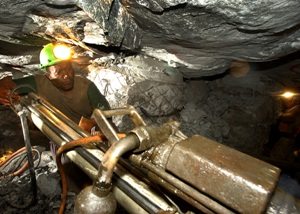
[miningmx.com] – HAVING all but averted a strike by followers of the Association of Mineworkers & Construction Union (AMCU), the South African gold sector can now meet its date with destiny; at least, a challenge that has been a decade in the making.
By December 2014, time is up for South African gold companies – and the mining sector in general – seeking to meet the 26% empowerment guideline set down ten years ago by the South African government in the form of the mining charter.
“While local gold miners maintain that they have complied with its provisions (all are in possession of new order mining rights), the mines minister, Susan Shabangu, didn’t agree at all back in 2010,’ according to a report by JPMorgan analysts Steve Shepherd, Allan Cooke and Abhishek Tiwari.
That was when the mineral resources department (DMR) audited the respective scorecards for the five-year deadline in 2009 and found that instead of 26% empowerment many companies claimed, they were far below that – some as little as 16% or lower.
At least one mining company – Lonmin – is still working towards its empowerment goal. It said in January it was working on an employee share ownership plan in order to comply with legislation.
There’s also the uncertainty of the tax review ordered by finance minister Pravin Gordhan in June last year – the Davis Tax Committee – that may result in additional “costs’ for the sector. Tougher health and safety standards, backed up by Section 54 notices that allow the DMR to shut mining shafts, add to the difficult circumstances outside of mining that face our gold miners.
“South African mining law and taxation continues to evolve in a way that raises regulatory uncertainty in our opinion,’ the analysts said. “Threats to security of tenure, of higher taxation and, perhaps, more punitive measures to enforce safety and health standards, make for a long list of challenges for mining executives,’ they added.
“And these issues may come to a head during a crisis period for the industry, certainly from a labour relations perspective.’
The challenges are just regulatory, however.
According to David Davis, an analyst for Standard Bank Group Securities, South Africa’s gold shares made a free cash margin, on an All-In Sustaining Cost basis, at about $1,331 per ounce. Whilst advances have been made on the cost front, a fresh round of cost-cutting is inevitable.
“We believe that the initial savings have come from cost components which are relatively easy targets such as reducing capital costs,’ said Davis. The next series of cost savings would come in more ominous form of “further right-sizing or operations and a reduction in production’.
Mines that might be vulnerable to such drastic steps are AngloGold Ashanti’s Obuasi, Sunrise Dam and Kopanang mines in Ghana, Australia and South Africa respectively. The Ghana mine of Damang owned by Gold Fields was vulnerable (Gold Fields has already suggested this) as well as its South Deep mine – a concerning development given the centrality of the operation to Gold Fields’ growth profile.
Up to seven gold mines owned by Harmony Gold are vulnerable, including Kusasalethu, its flagship operation while Sibanye Gold, although cash generative, may look to conduct surgery at its Beatrix mine.
Sibanye Gold’s corporate affairs head, James Wellsted, begs to differ. “Analysts seem to work on a dollar gold price scenario only and discount the effects of the rand which has weakened against the dollar,’ he says.
The rand gold price is, at the time of writing, around R450,000/kg and could be “well supported’ at R430,000/kg, according to the JP Morgan analysts.









